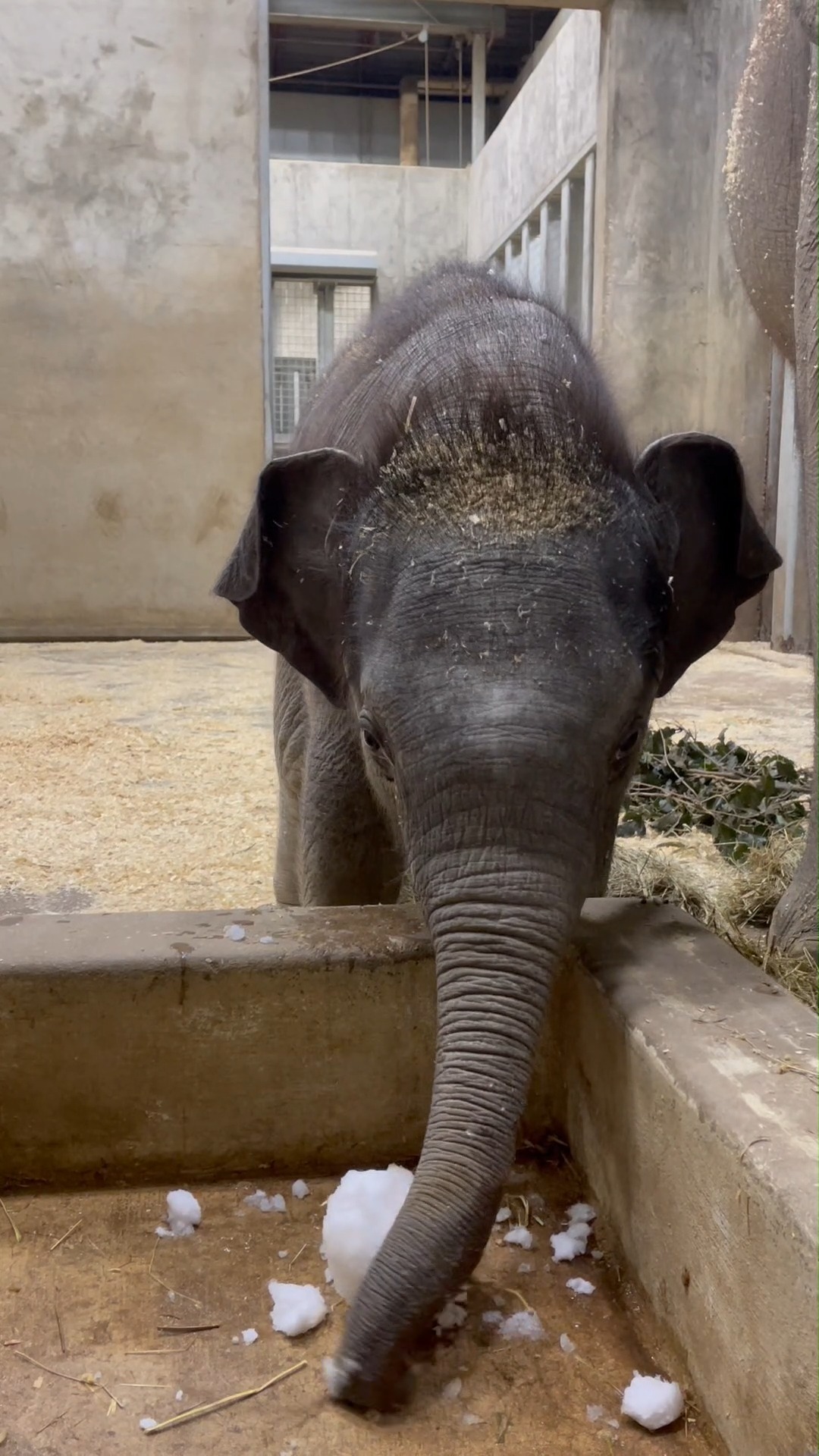- The role of zoo management and animal care in enriching the lives of captive elephants like Jet through creative activities.
- The importance of indoor and outdoor environments for baby elephants, focusing on developmental and environmental needs.
- Insight into the interaction between humans and animals within conservation and education contexts.
- The significance of weather and habitat considerations when transitioning young elephants to outdoor environments.
- Conservation efforts and challenges in maintaining healthy populations of elephants in zoos and the wild.
Bringing joy and enrichment to the life of a young captive elephant requires innovative and thoughtful approaches from zookeepers and animal care professionals. This week, keepers delighted baby elephant Jet by crafting a playful indoor snow day complete with his own snowman. Although confined indoors, activities like these are crucial for Jet’s cognitive and social development. Understanding the need for such enrichment requires a comprehensive view of zoo management, wildlife conservation, and animal welfare.
Zoo management involves ensuring the captive animals receive not just basic care, but varied, enriching experiences that mimic their natural habitats as closely as possible. For baby elephants like Jet, who are not yet ready for outdoor exposure, keepers must provide creative indoor activities that stimulate both body and mind. Constructing a snowman inside allows Jet to interact with new textures and shapes, fostering curiosity and encouraging natural behaviors such as investigation and play. These activities are not devised on a whim but are part of structured enrichment plans developed by animal behaviorists and care staff, aimed at promoting the psychological well-being of young animals in their care.
Indoor activities are integral during a baby elephant’s early development stages before moving to larger outdoor habitats. These environments are crafted with safety and enrichment in mind. An indoor space can control variables like temperature and risk, allowing the keepers to safely introduce experiences that would naturally occur outside. For Jet, this controlled exposure is crucial until he is robust enough to face the fluctuating weather conditions outdoors. By carefully integrating sensory experiences such as snow, keepers aim to prepare young elephants for future interactions with their environment. This preparation helps ease the transition to larger habitats when the time comes, bolstering confidence and resilience.
As young elephants like Jet spend their initial months indoors, they form the foundation of what will become enduring bonds with their human caretakers. These bonds are critical not only for the elephants’ comfort and security within the zoo setting but also for facilitating necessary medical check-ups and routine care. Positive interactions with their keepers contribute to socialization, enabling elephants to respond calmly and positively to human presence, which is vital within a managed care context. Furthermore, these relationships pave the way for educational opportunities where visitors observe these majestic creatures and learn about the species, thus raising awareness about the importance of wildlife conservation.
Transitioning a baby elephant like Jet from indoor to outdoor habitats is dependent on several factors beyond just age. Weather conditions play a significant role, as elephants are sensitive to extreme temperatures, which can impact their health. Therefore, zoos must carefully evaluate the weather and have contingency plans for sudden climate changes. Additionally, the outdoor environment must be meticulously prepared to be a safe and stimulating space that offers a balance of natural elements like water, mud, and foliage, simulating their wild counterparts. This meticulous setup is required to maintain Jet’s physical and mental health, providing him the space to explore, exercise, and engage in vital social interactions with other elephants.
Conservation efforts within zoos extend beyond providing daily care and enrichment for animals like Jet. Zoos play a key role in wildlife conservation by participating in breeding programs designed to maintain genetic diversity and ensure the long-term survival of endangered species such as elephants. These efforts are crucial as elephant populations face numerous threats in the wild, including habitat loss, poaching, and human conflict. Through educational programs and collaboration with international conservation groups, zoos help raise public awareness and promote action to protect these majestic animals’ habitats. Moreover, research conducted within zoological settings can offer insights into elephants’ physiological and psychological needs, potentially guiding broader conservation strategies.
The creation of a snow day for Jet serves as an example of how zoo management creatively addresses the animals’ welfare in captivity. Providing safe, enriching experiences ensures that physical health and cognitive functions are actively supported. As zookeepers innovate within the constraints of indoor environments, they maintain a strong focus on long-term objectives centered on the elephants’ eventual integration into larger, more naturalistic settings. Weather and environmental considerations will ultimately shape Jet’s journey from these cozy confines to the broader outdoor expanse of his future home, and every step is taken with the broader aim of conservation in mind.
*****
Source Description
Keepers brought the snow day inside for baby elephant Jet this week by creating him his own little snow man ☃️🥹
He will make his debut in the outside habitats once he is old enough and weather allows.


